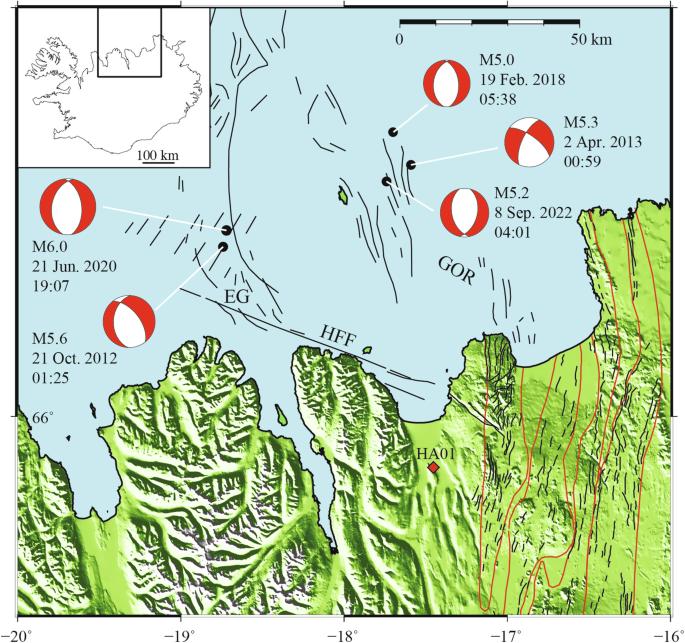利用地下水化学变化预报冰岛地震的方法
IF 8.1
1区 地球科学
Q1 ENVIRONMENTAL SCIENCES
引用次数: 0
摘要
在地震发生前几个月预报地震的方法方面取得了进展。该方法依靠地下水化学变化作为地震前兆。在 2014 年发表的一项研究中,我们发现地下水化学变化发生在 2012 年和 2013 年影响冰岛北部的两次 5 级及以上地震之前,并且与这两次地震有关。在此,我们测试了一个假设,即根据我们已发表的研究结果,是否可以预测接下来的十年(即 2014-2023 年)会发生类似或更大的地震。我们发现,在发生的三次大于 5 级的地震中,我们可以预测其中一次。我们注意到地下水化学成分的变化是振荡性的,因此推断地下水源区域的扩张和收缩是由地壳扩张和断裂矿化耦合引起的,与地震前的应力积聚有关。最后,我们提出了如何在其他地方实施我们的方法。对冰岛北部 2014 年至 2023 年地下水化学成分的分析表明,地下水化学成分的变化可比地震早几个月发生,可能具有一定的地震预报潜力。本文章由计算机程序翻译,如有差异,请以英文原文为准。

Towards a method for forecasting earthquakes in Iceland using changes in groundwater chemistry
An advance has been made towards a method for forecasting earthquakes several months before they occur. The method relies on changes of groundwater chemistry as earthquake precursors. In a study published in 2014, we showed that changes of groundwater chemistry occurred prior to and were associated with two earthquakes of magnitude 5 and higher, which affected northern Iceland in 2012 and 2013. Here we test the hypothesis that similar or larger earthquakes could have been forecast in the following decade (i.e. 2014–2023) based on our published findings. We found that we could have forecast one of the three greater than magnitude 5 earthquakes that occurred. Noting that changes of groundwater chemistry were oscillatory, we infer expansion and contraction of the groundwater source region caused by coupled crustal dilation and fracture mineralisation associated with the stress build-up before earthquakes. We conclude by proposing how our approach could be implemented elsewhere. An analysis of groundwater chemistry in northern Iceland from 2014 to 2023 shows that groundwater chemical changes can precede earthquakes by several months and may carry some potential for forecasting earthquakes.
求助全文
通过发布文献求助,成功后即可免费获取论文全文。
去求助
来源期刊

Communications Earth & Environment
Earth and Planetary Sciences-General Earth and Planetary Sciences
CiteScore
8.60
自引率
2.50%
发文量
269
审稿时长
26 weeks
期刊介绍:
Communications Earth & Environment is an open access journal from Nature Portfolio publishing high-quality research, reviews and commentary in all areas of the Earth, environmental and planetary sciences. Research papers published by the journal represent significant advances that bring new insight to a specialized area in Earth science, planetary science or environmental science.
Communications Earth & Environment has a 2-year impact factor of 7.9 (2022 Journal Citation Reports®). Articles published in the journal in 2022 were downloaded 1,412,858 times. Median time from submission to the first editorial decision is 8 days.
 求助内容:
求助内容: 应助结果提醒方式:
应助结果提醒方式:


